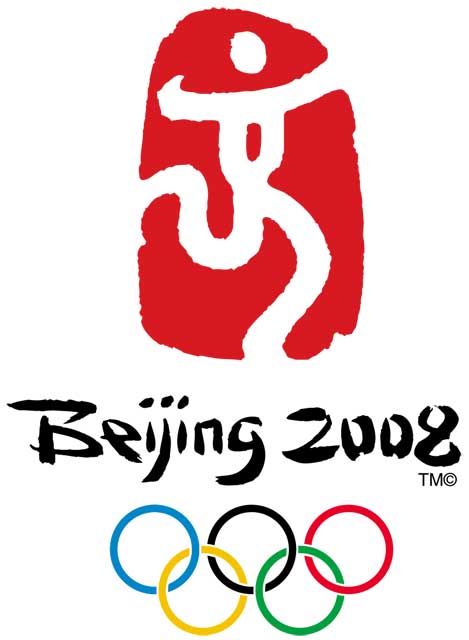Beijing Olympic Mascots
Colorful, playful and fun, the Fuwa are the mascots of the 2008 Beijing Olympic Games to be held in Beijing. Like radiant cartoon characters bursting with energy, and all wearing smiles, the mascots bring symbols of friendship and peace to the rest of the world that will visit and watch the games. In fact, the characters are meant to embody the fun side of playful children while exuding the qualities of China’s most prominent animals – fish, swallow, a Panda bear and a Tibetan Antelope. The fifth Fuwa represents the Olympic flame.
What’s in a Name?
http://www.flickr.com/photos/rosedavies/1813706889/
The name of each Fuwa rhymes in two syllables, which is a typical way Chinese youth show affection. Therefore, the fun names of the mascots should not come as much surprise. The five mascots include Beibei - the fish, Jingjing – a Panda, Huanhuan - the Olympic flame, Yingying - the Tibetan Antelope, and Nini - a swallow.
The phrase “Welcome to Beijing” is created by combining the names, Bei Jing Huan Ying Ni. This play on words is meant as a welcome offering by the Chinese to the rest of the world.
Fuwa Symbols
http://www.flickr.com/photos/coolmeow/2557200399/
The characters created to be the Olympic mascots also represent physical aspects of China. These elements are shown in the mascots’ headpieces and include the sea, sky, earth, fire and forest. They are stylistically designed and drawn in an ornamental manner. Each Fuwa also symbolizes a Chinese blessing, including prosperity, passion, happiness, good luck and health. According to the Chinese, the Fuwa are vehicles to express a strong desire to bring peace and friendship to the world. Each also represents a specific ring within the Olympic ring symbol.
Beibei
http://www.flickr.com/photos/ming2046/1178161108/
Beibei, which is a blue colored female, is the symbolic fish. In the Chinese culture, the fish is a sign of prosperity. It also is a sign of a good year and good life. Therefore, she is meant to symbolize the desire to spread good will and prosperity to the world. Beibei is described as gentle yet strong in water and she represents the blue Olympic ring.
Jingjing
http://www.flickr.com/photos/beautifulcataya/2539237854/
Jingjing is the male Panda, colored black and white, and he offers blessings of happiness. Lotus designs are found in his headpiece, which were drawn from paintings on porcelain that date to the Song Dynasty. They represent a plentiful forest and a strong relationship between man and nature. The design of Jingjing is intended to show a wish to protect nature. The character is described as being strong and represents the black Olympic ring.
Huanhuan
http://www.flickr.com/photos/portablematthew/2249351594/
Huanhuan represents the Olympic flame. As such, he is colored all in red with a fiery headpiece that stands upright. The design on Huanhuan was modeled after the famous Dunhuang murals. He embodies the passion of the games and is depicted as being in the center of the Fuwa because he is considered to be at the center of the Olympic spirit.
The light from the fire of Huanhuan is intended to be a shining invitation for others to visit Beijing. Huanhuan is bursting with energy and excited. He, of course, symbolizes the red Olympic ring.
Yingying
http://www.flickr.com/photos/portablematthew/2249336278/
Drawn in a running pose, Yingying is fast, just like the Tibetan Antelope he represents. The Tibetan Antelope was one of the first to receive protection in China. Yingying’s ability to move quickly over long distances is representative of the great distances within China. Yingying also is a reference to the pledge by Beijing to hold a Green Olympics.
The headpiece worn by Yingying is striking and taps many decorative features from the Qinghai-Tibet and Sinkiang cultures. He represents the yellow Olympic ring.
Nini
http://www.flickr.com/photos/hatters/2265438242/
Finally, Nini is the green character, which is modeled after the golden-winged swallow kite design. Each year, Beijing children fly kites throughout the city. The swallow design is among the most popular of the kites. Nini’s golden wings allude to an infinite sky and offer good luck to anyplace she may travel.
In Chinese, the word “swallow” is pronounced like “yan.” In ancient times, Beijing was really called Yanjing. Nini represents innocence and joy. She obviously represents the green Olympic ring.
The doll-like mascots were revealed to the world in November 2005 and were presented publicly during a ceremony in Beijing.
Olympic Mascots
© Beijing-Visitor.com






